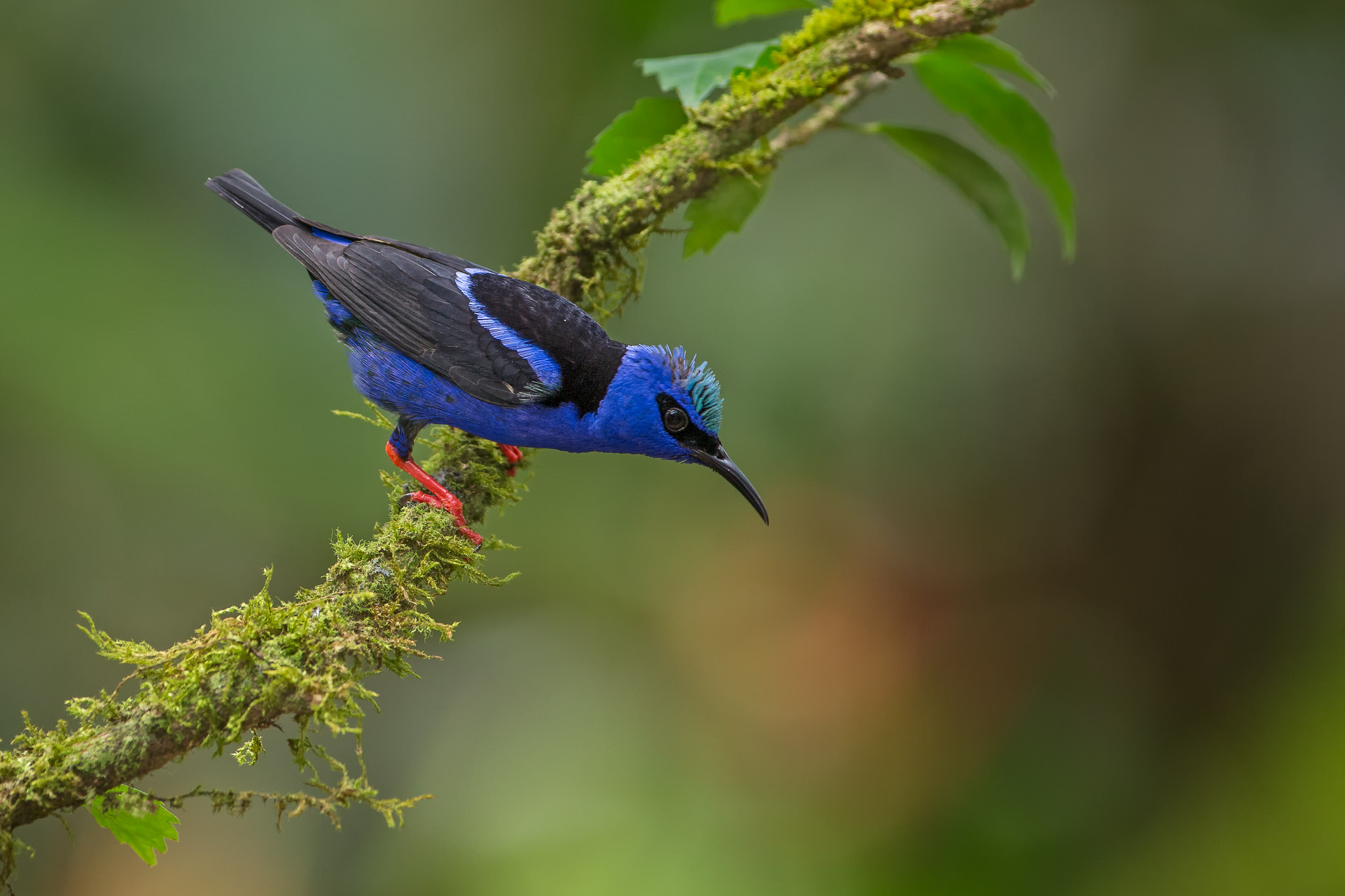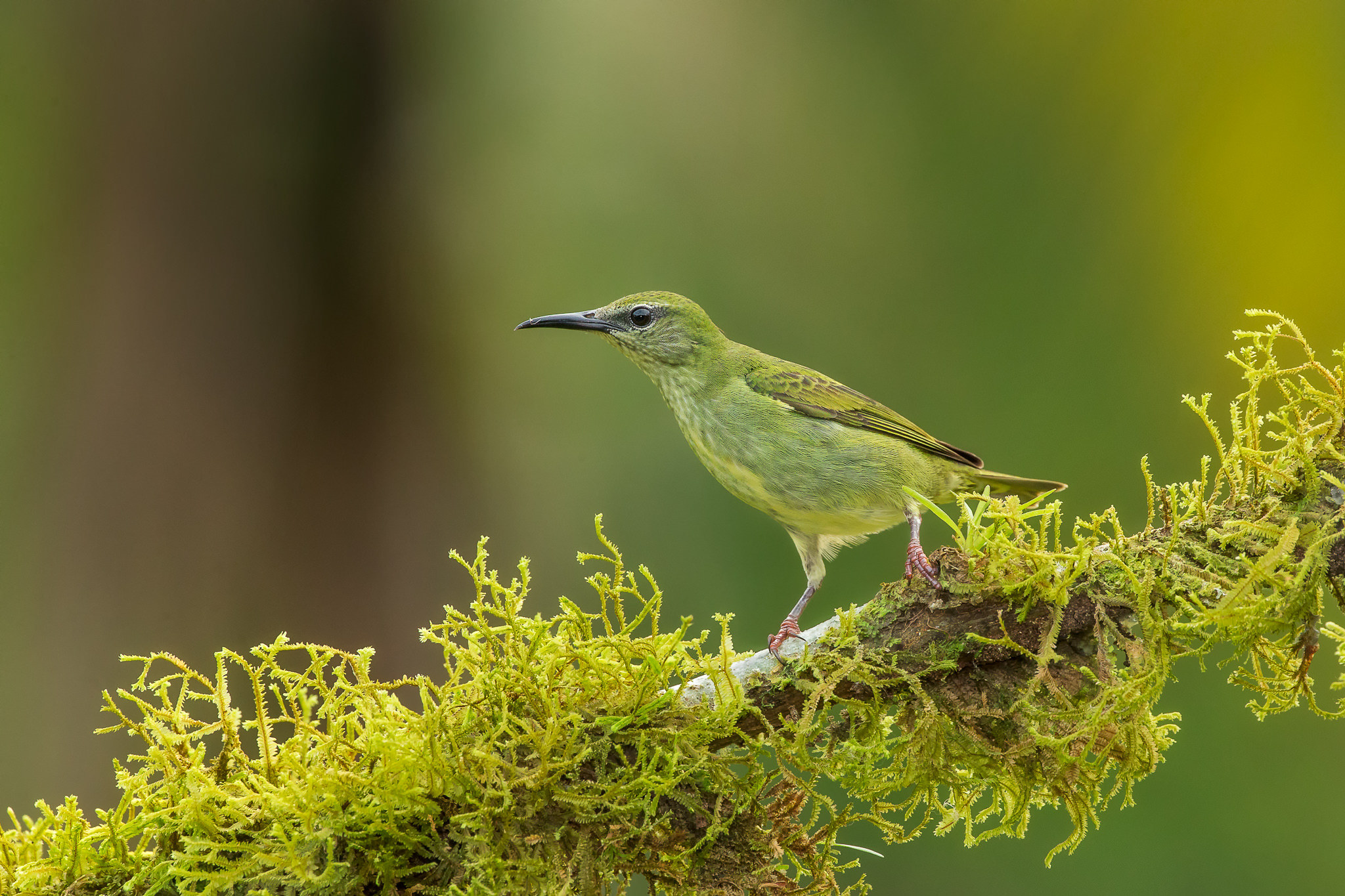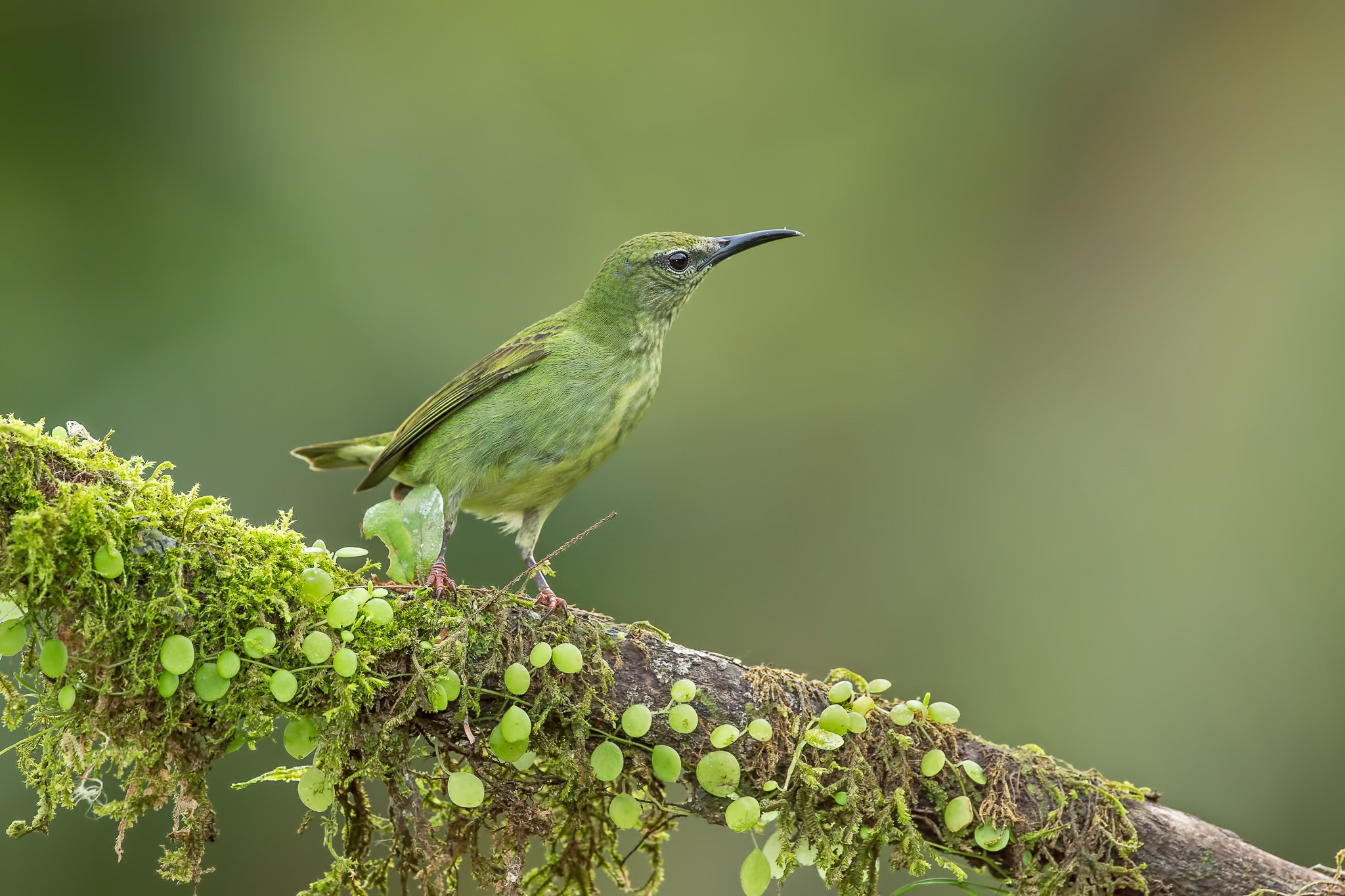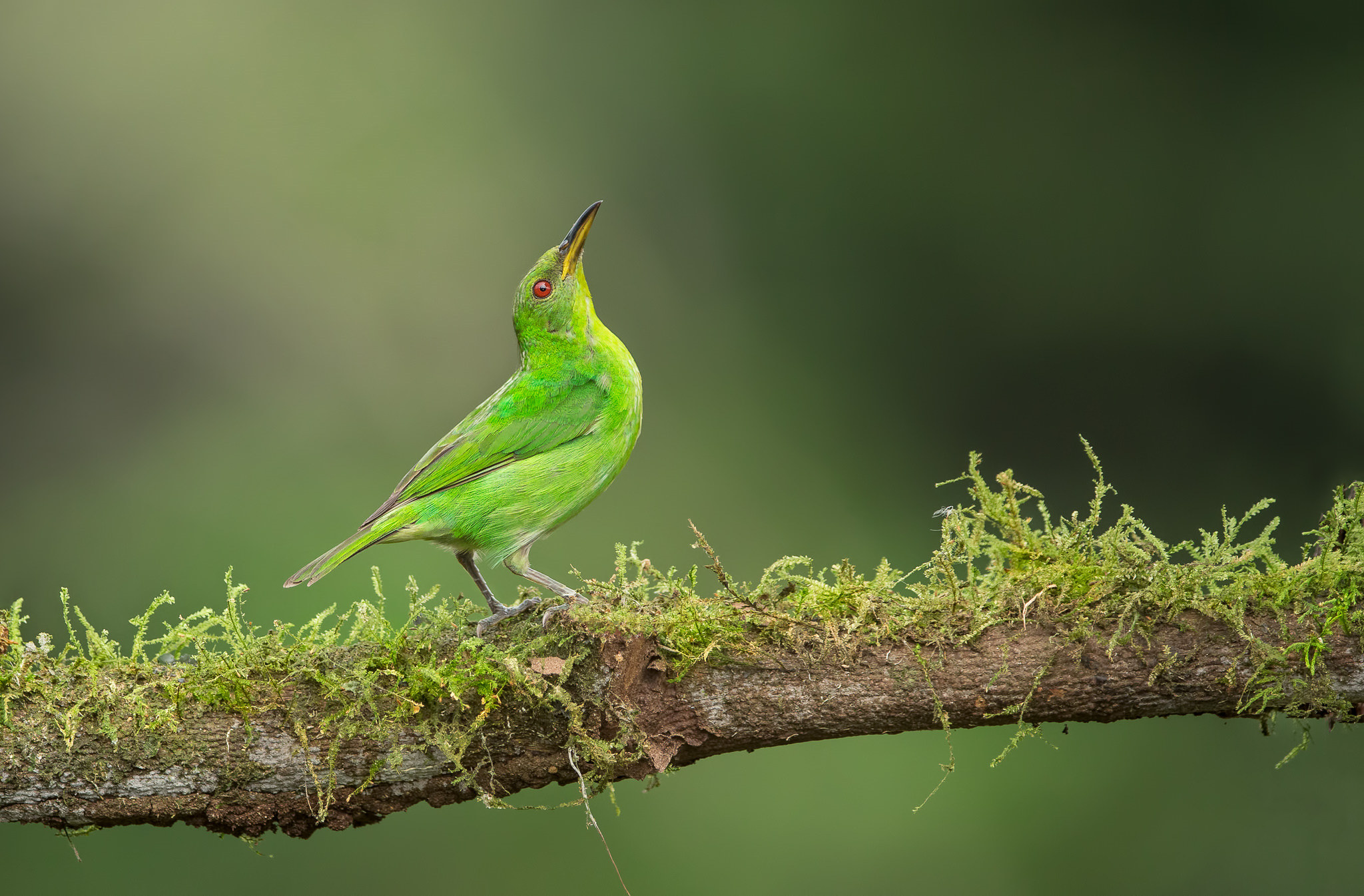A commonly repeated, yet false, belief about the various honeycreeper species is that some of them lay black eggs.[1] This idea was first made known in the scientific community with the 1899 publication of Nehrkorn’s egg catalog; Nehrkorn’s claim was cited in ornithological literature for many years without verification, but by the 1940s it was established that none of the members of Cyanerpes lay such eggs.
They occur in the forest canopy, and, as the name implies, they are specialist nectar feeders with long curved bills.
The four Cyanerpes species have colourful legs, long wings and a short tail. The males are typically glossy purple-blue and the females greenish.
The green honeycreeper is called a honeycreeper, but belongs to the monotypic Chlorophanes genus. It has a larger, stouter beak than the Cyanerpes group, and is less heavily dependent on nectar. The golden-collared honeycreeper, is also a honeycreeper, but is monotypic in the genus Iridophanes.
source: wikipedia









